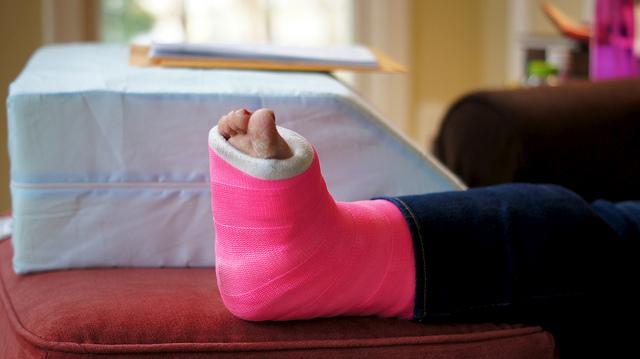When you’re recovering from an illness, it can feel like your mind and body are out of sync. Your mind is quickly convinced that you’re fine and you can walk it off, but your body is telling you to slow down and take it easy. This is especially true when you’re trying to get back into your exercise regime after a serious injury. Motions that were once so easy for you now leave you more tired than when you first started working out. As frustrating as it seems, this is natural, and it will be a while before your body gets back to where it was before. In the meantime, here is some advice that will help you slowly ease back into your routine.
Listen to the professionals
Never self-diagnose your injury; you’re not impartial enough to give an accurate view. Your doctor and your fitness instructors are more qualified than you to asses the extent of your injury because they’ve seen it all before.
Start with low impact workouts
High impact sports are exercises that involve more direct force into the body, such as running, contact sports, and gymnastics. To avoid aggravating your injury, start off with a low impact workout. Your trainer should be able to guide you in the right direction, but usually this will involve walking on a treadmill, an elliptical machine, or a trip to the local swimming pool.
The 10% rule
Another way to ease back into a workout is the 10% rule. For example, if you were able to run 20 minutes three times a week after you pulled your hamstring, you should be able to run 22 minutes three times week by the following week. You should not attempt to do 30 minutes the following week, as that could cause you further harm.
Massage and stretch
Gentle massages can help aid recovery, and improve joint mobility and range of movement. However, it should not be administered within the first 48 hours of the injury occurring. Find out more about self massage and how it can improve mobility at www.mobilityguardian.com.
Listen to your body
This is not a time to play through the pain. If you feel any cramping, discomfort, or aching, listen to your body and stop what you are doing. It’s understandable to feel frustrated about this, especially if it’s a move you could easily do before you were injured, but you have to stay positive. If you start to feel low, try to find other activities that will help boost your mood until your injury heals.
Be patient
Often, following an injury, people feel that they can be back to 100% within a week or two. But that’s not how the body works. Depending on your injury, it could take a month or longer for your body to be back to its peak condition, and that’s only if you don’t hurt yourself further by trying to prove that you’re completely healed.





With a professional online exam helper by your side, you don’t have to worry about your online exams, quizzes, or online class test. Let us help you achieve your desired grades!
Pay Someone To Take My Online Exam
We provide support for those looking for ‘Take my GED for me’ or ‘Take my TEAS exam’ solutions. Need help with your GED or TEAS exam? We offer services so you can pay someone to take your GED or TEAS exam, hire someone for exam assistance and solutions.
Hire Someone To Take My GED Exam
Returning to exercise after an injury required patience and body awareness. I learned to prioritize mobility and gradual strength-building over intensity. Listening to my body physical therapy for seniors near me and working with professionals made a huge difference. Progress felt slow at first, but consistent, mindful movement helped me regain confidence and avoid setbacks.
You have shared really good information, Thanks
Good information was shared, thanks for this.